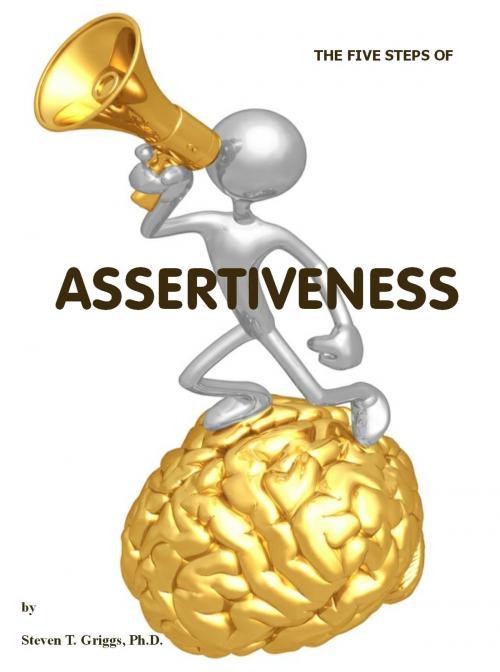The Five Steps of Assertiveness (+)
Nonfiction, Health & Well Being, Psychology, Clinical Psychology, Self Help, Mental Health, Happiness| Author: | Steven T. Griggs, Ph.D. | ISBN: | 9781465992703 |
| Publisher: | Steven T. Griggs, Ph.D. | Publication: | January 8, 2012 |
| Imprint: | Smashwords Edition | Language: | English |
| Author: | Steven T. Griggs, Ph.D. |
| ISBN: | 9781465992703 |
| Publisher: | Steven T. Griggs, Ph.D. |
| Publication: | January 8, 2012 |
| Imprint: | Smashwords Edition |
| Language: | English |
I’ve been a practicing psychologist in an outpatient setting for over twenty-seven years.
It turns out assertiveness can be taught to almost everyone, which is what I do in the office. I’ve taught it to children as young as two. Older adults can learn new tricks, too, including this one. I’ve taught assertiveness to schizophrenics. I even got a Brazilian teenager to learn it without me being able to speak Portuguese (I taught him non-verbally). Anyone can learn to be assertive.
I’ve read most of the pop-psychology literature on assertiveness over the last 20+ years. Many of the books are excellent. They, like this ebook deal with a variety of assertivness aspects; for example, they talk about this peak experience for handling other assertive people, not feeling vulnerable or subservient, taking an assertiveness exam, standing up for yourself, competently assessing yourself and others, developing verbal assertiveness skills and self confidence, feeling self assured and expressing yourself and your opinions, feeling comfortable being outspoken, even being opinionated, how to stop being a human doormat, how to stop feeling intimidated and to deal with domineering people, being straightforward, stopping people from walking all over you, how to stop feeling inhibited, insecure, hesitant, and so on.
Most of these books are too long to cover this relatively simple subject. I’ve boiled down the concepts in these books into the basic five steps, plus. I’ve made this as easy to understand as is humanly possible, combining what I’ve read with what I’ve learned from clients.
There are five basic steps of and three levels of assertiveness. I explain the difference between assertiveness, non-assertiveness, passivity, and passive aggression and aggression.
To be assertive, you have to know the difference between content and process in your communication. You have to know how to "articulate the process" using just the right words, which I supply (almost eight hundred). This latter idea is the one thing that will increase your assertiveness fifty percent, even if you do nothing else. It's also something you can learn in under two minutes.
I describe the two general categories of excuses and the seven most common reasons used to justify not being assertive. Then I describe thirteen points that make assertiveness effective. I sprinkle examples throughout the ebook, but include another section at the end with several more in-depth examples.
Lastly, find out the "down and dirty" version of how to be assertive. It's only three steps, and is easy.
I’ve been a practicing psychologist in an outpatient setting for over twenty-seven years.
It turns out assertiveness can be taught to almost everyone, which is what I do in the office. I’ve taught it to children as young as two. Older adults can learn new tricks, too, including this one. I’ve taught assertiveness to schizophrenics. I even got a Brazilian teenager to learn it without me being able to speak Portuguese (I taught him non-verbally). Anyone can learn to be assertive.
I’ve read most of the pop-psychology literature on assertiveness over the last 20+ years. Many of the books are excellent. They, like this ebook deal with a variety of assertivness aspects; for example, they talk about this peak experience for handling other assertive people, not feeling vulnerable or subservient, taking an assertiveness exam, standing up for yourself, competently assessing yourself and others, developing verbal assertiveness skills and self confidence, feeling self assured and expressing yourself and your opinions, feeling comfortable being outspoken, even being opinionated, how to stop being a human doormat, how to stop feeling intimidated and to deal with domineering people, being straightforward, stopping people from walking all over you, how to stop feeling inhibited, insecure, hesitant, and so on.
Most of these books are too long to cover this relatively simple subject. I’ve boiled down the concepts in these books into the basic five steps, plus. I’ve made this as easy to understand as is humanly possible, combining what I’ve read with what I’ve learned from clients.
There are five basic steps of and three levels of assertiveness. I explain the difference between assertiveness, non-assertiveness, passivity, and passive aggression and aggression.
To be assertive, you have to know the difference between content and process in your communication. You have to know how to "articulate the process" using just the right words, which I supply (almost eight hundred). This latter idea is the one thing that will increase your assertiveness fifty percent, even if you do nothing else. It's also something you can learn in under two minutes.
I describe the two general categories of excuses and the seven most common reasons used to justify not being assertive. Then I describe thirteen points that make assertiveness effective. I sprinkle examples throughout the ebook, but include another section at the end with several more in-depth examples.
Lastly, find out the "down and dirty" version of how to be assertive. It's only three steps, and is easy.















